4 common invasive species in Nova Scotia forests
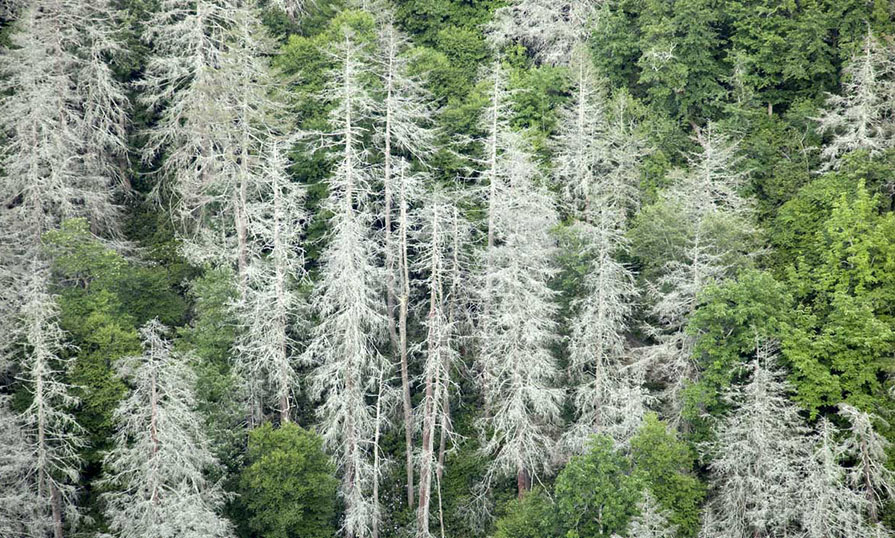
Invasive species are non-native plants, animals or microorganisms that can harm the natural balance of our environment. They often pose a significant threat to biodiversity, which can in turn impact our economic and social well-being. They usually don’t have a natural competitor or predator to keep their numbers in check. Being able to recognize and report these species is one of the most effective ways we can help slow their spread and support ecological forestry.
Below are some invasive species currently affecting our forests and what to watch out for.
Emerald Ash Borer
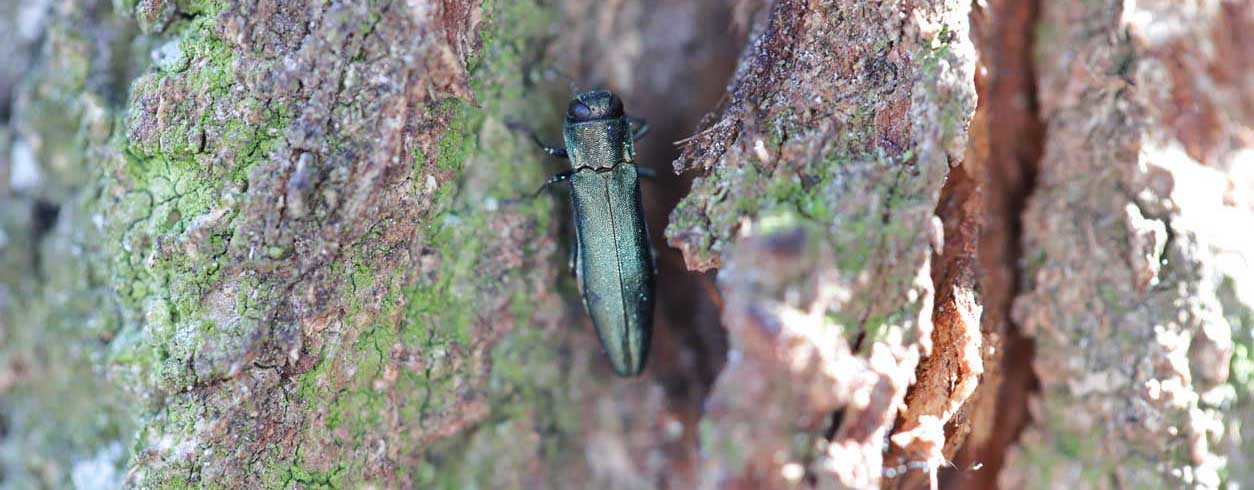
The Emerald Ash Borer is a small beetle first found in Nova Scotia in 2018. Despite their small size, they can destroy even large Ash trees, including the threatened Black Ash, in 1-4 years. The Larvae of these beautiful but deadly small green beetles create winding galleries underneath the bark and leave small, tell-tale D-shaped holes as they exit the tree. Ash has important cultural value to the Mi’kmaq, who use their wood to make baskets.
Beech Leaf-Mining Weevil
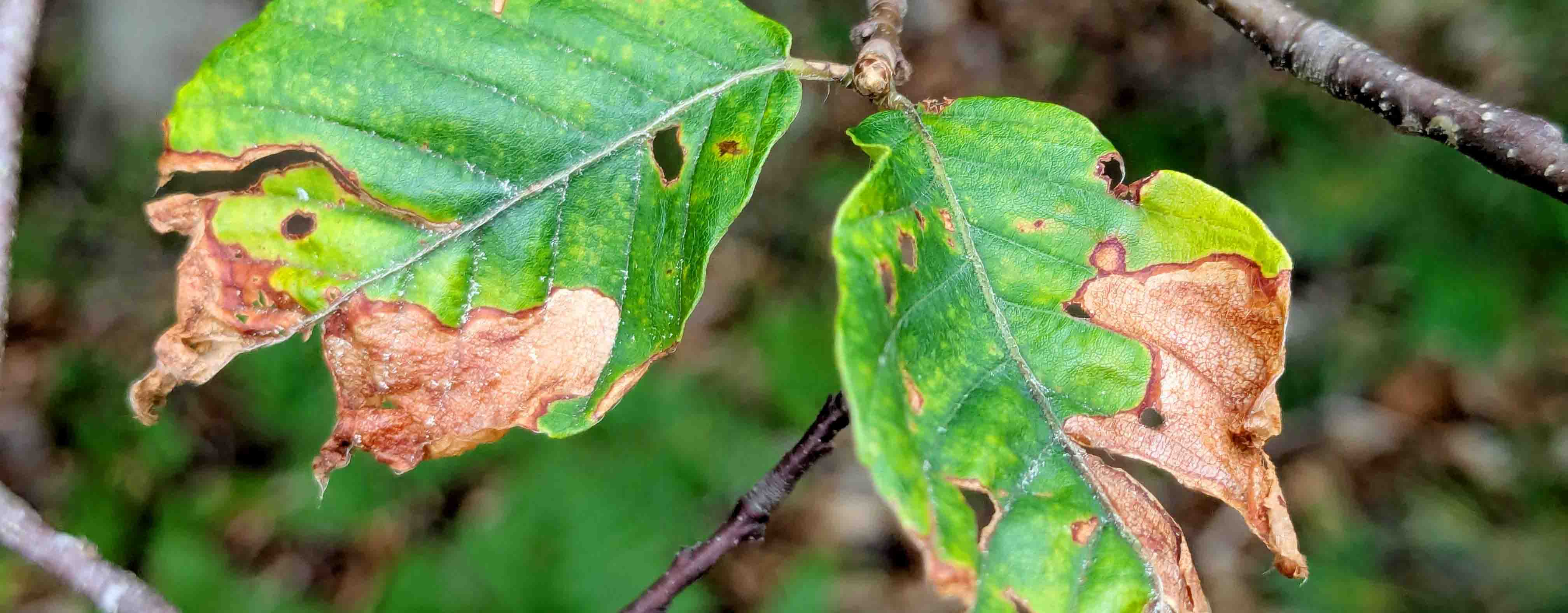
The Beech Leaf-Mining Weevil is an insect that feeds on the leaves of American beech trees and was first reported in Halifax and Cape Breton in 2011. American Beech trees are already often disfigured and stunted due to other invasive species. Affected beech trees suffer from leaf damage and defoliation and will eventually die. Mature beech trees are an important tree for wildlife as their seeds are an important food source for many animals.
Glossy Buckthorn
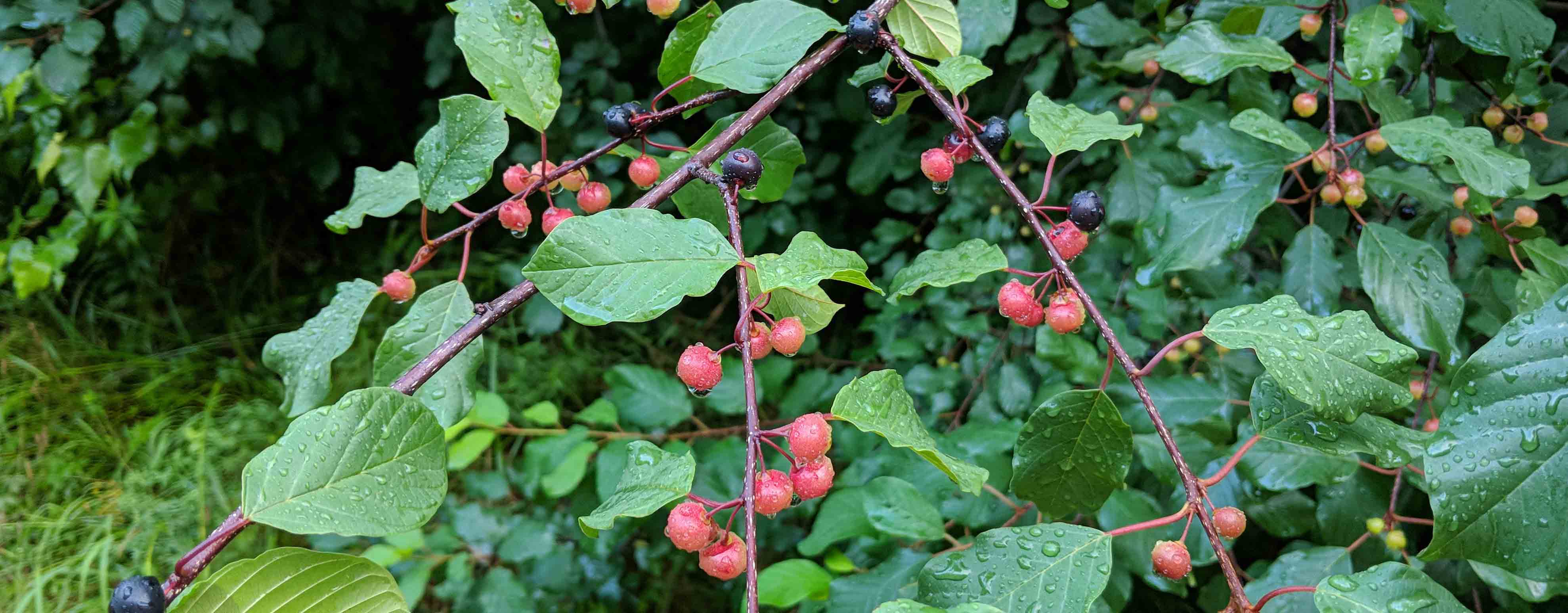
Not an insect, but a small tree, Glossy Buckthorn loves to grow in old fields, forests and forested wetlands. It outcompetes native seedlings for nutrients and light and can take over large areas in dense thickets. It produces large numbers of berries every year and once established, is extremely hard to control and remove completely. In areas where ecological forestry is a priority, its spread poses serious challenges to forest restoration.
Hemlock Woolly Adelgid
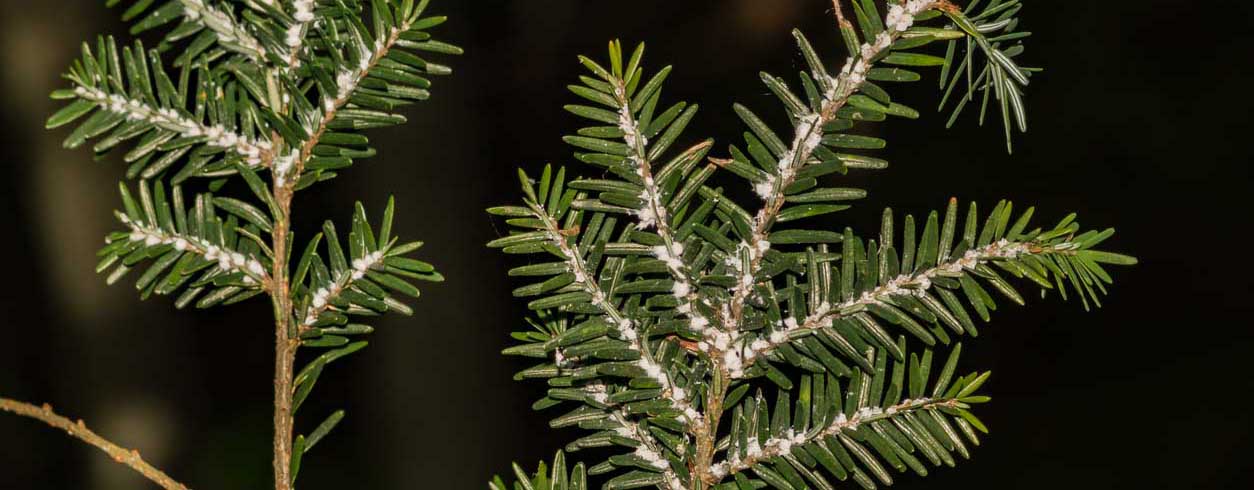
One forest pest to look out for this winter is the Hemlock Woolly Adelgid (HWA). HWAs are insects that affect the Eastern Hemlock, a foundational tree in Nova Scotian forests, by feeding on the base of hemlock needles, causing needle loss, foliage thinning and usually, eventual tree death. Winter and early spring are a great time to spot the woolly white clusters on the underside needles.
How you can help
Have you seen one of these species? You can help by taking a picture and reporting the sighting to the Nova Scotia Invasive Species Council.
Reporting these sightings is an important step in protecting our forests and advancing ecological forestry practices.
